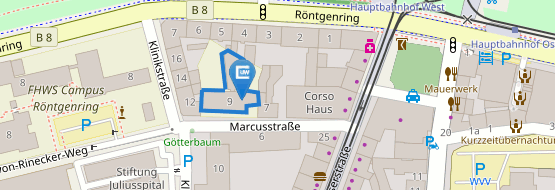Bodily Processes
Emodiment, Interoception and Body Perception
Bearings in bridge structures are contact points that connect different parts of a bridge. They are usually not visible and yet they play a central role in the flexibility and stability of the bridge. Physical processes can be understood in the same way as bearings in mental health. They consciously and unconsciously influence neuronal, cognitive, emotional and behavioral processes and are sometimes the cause of psychological suffering.
The bodily processes working group deals with the topics of embodiment, interoception and body perception in subclinical and manifest mental disorders. The working group focuses on personality disorders and trauma-related disorders. Studies show that people with borderline personality disorder exhibit reduced body awareness and that body dissociation mediates the connection between early childhood traumatization and impaired personality functions (Bertsch et al. 2024; Schmitz et al. 2023). We use various methods to investigate the processes: neurophysiological markers (e.g. heartbeat perception task, EEG), virtual reality (VR) and behavioral experiments. The research group works closely with the Department of Human-Computer Interaction at the University of Würzburg and the Chair of Clinical Psychology at LMU Munich.
Emodiment, Interoception and Body Perception
Bertsch, K., Göhre, I., Cottin, M., Zettl, M., Wienrich, C., & Back, S. N. (2024). Traumatic childhood experiences and personality functioning: effect of body connection in a cross-sectional German and Chilean sample. Borderline personality disorder and emotion dysregulation, 11(1), 20. https://doi.org/10.1186/s40479-024-00266-z
Schmitz, M., Back, S. N., Seitz, K. I., Harbrecht, N. K., Streckert, L., Schulz, A., Herpertz, S. C., & Bertsch, K. (2023). The impact of traumatic childhood experiences on interoception: disregarding one's own body. Borderline personality disorder and emotion dysregulation, 10(1), 5. https://doi.org/10.1186/s40479-023-00212-5
Schmitz, M., Müller, L. E., Seitz, K. I., Schulz, A., Steinmann, S., Herpertz, S. C., & Bertsch, K. (2021). Heartbeat evoked potentials in patients with post-traumatic stress disorder: an unaltered neurobiological regulation system?. European journal of psychotraumatology, 12(1), 1987686. https://doi.org/10.1080/20008198.2021.1987686
Schulz, A., Back, S. N., Schaan, V. K., Bertsch, K., & Vögele, C. (2021). On the construct validity of interoceptive accuracy based on heartbeat counting: Cardiovascular determinants of absolute and tilt-induced change scores. Biological psychology, 164, 108168. https://doi.org/10.1016/j.biopsycho.2021.108168
Schmitz, M., Bertsch, K., Löffler, A., Steinmann, S., Herpertz, S. C., & Bekrater-Bodmann, R. (2021). Body connection mediates the relationship between traumatic childhood experiences and impaired emotion regulation in borderline personality disorder. Borderline personality disorder and emotion dysregulation, 8(1), 17. https://doi.org/10.1186/s40479-021-00157-7
Wittkamp, M. F., Bertsch, K., Vögele, C., & Schulz, A. (2018). A latent state-trait analysis of interoceptive accuracy. Psychophysiology, 55(6), e13055. https://doi.org/10.1111/psyp.13055
Glück, V. M.*, Engelke, P.*, Hilger, K.*, Wong, A. H. K., Boschet, J. M. & Pittig, A. (2023). A network perspective on real-life threat, anxiety and avoidance. Journal of Clinical Psychology, 1-16. https://doi.org/10.1002/jclp.23575
Verona, E., Chen, H., Hall, B.,….Hilger, K.,…Clayson, P. E. (2023, in-principle acceptance, Registered Report Stage 1, Cerebral Cortex). Fear, Anxiety, and the Error-Related Negativity: A Registered Report of a Multi-Site Replication Study.


